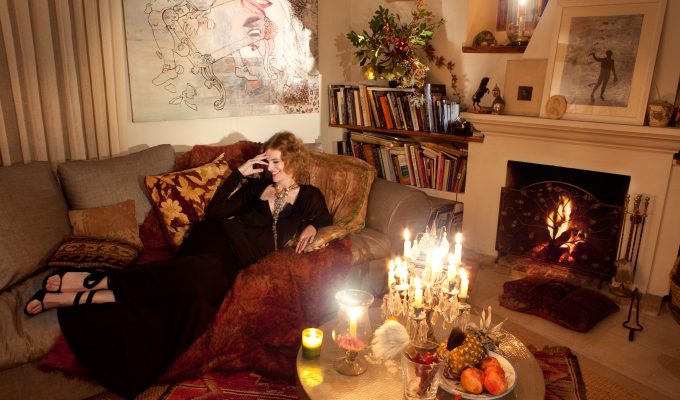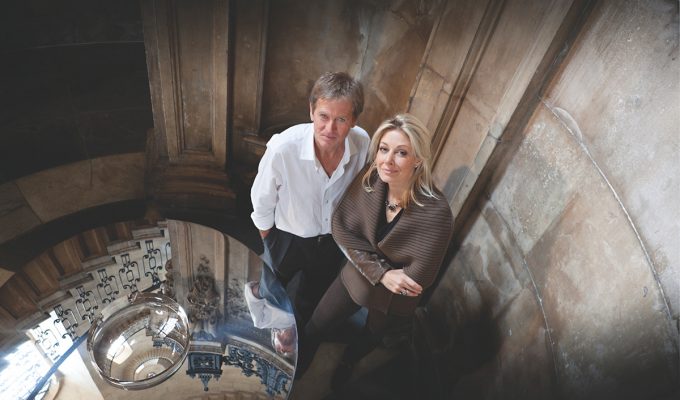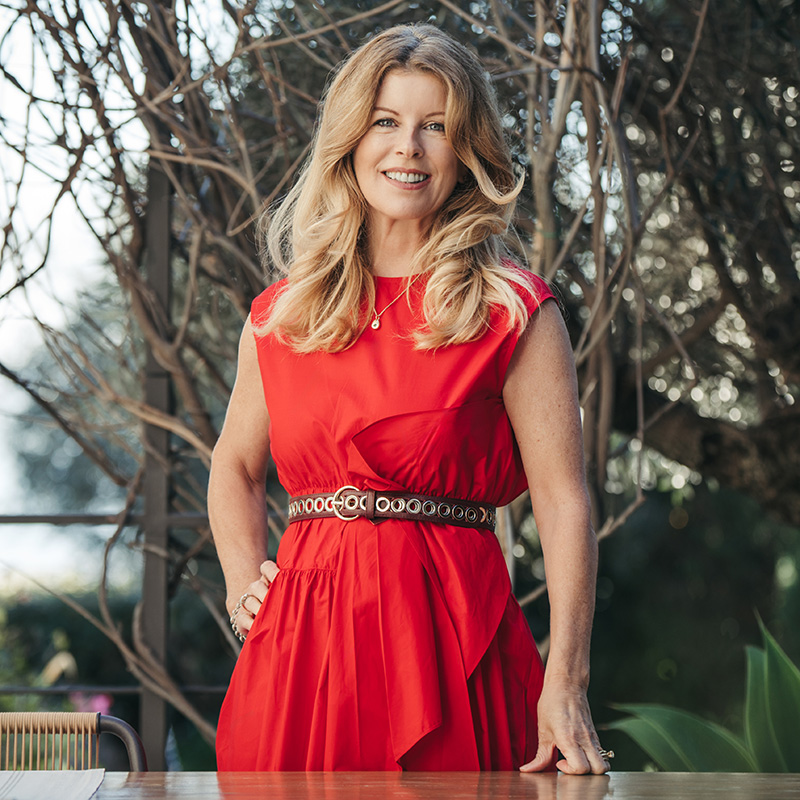María de Fátima Simoneta Luisa Gómez-Acebo y Borbón (Madrid, 1968) is a Spanish grandee. She is the eldest offspring and only daughter of the Duke and Duchess of Badajoz, a niece of the King and Queen of Spain (her mother is a sister of King Juan Carlos) and has five brothers. She began her career as a professional horse-riding competitor, which is her passion.
As an aesthete too, she later moved to London to study at Sotheby’s Institute of Art. A series of consequent events changed her life: she started her career at Cartier and, the same year, married José Miguel Fernández Sastrón in Palma’s Cathedral. The couple have three children: Luis (22), Pablo (18) and María (13). Although now divorced, they maintain an excellent relationship. Talking about her wedding with a great sense of humour, she says: “I remember it was a very warm day in Palma, but also how happy I was. It was magical.” Her favourite piece of jewellery is still her engagement bracelet, always worn.
Simoneta likes opera, reading, smoking, and drinking Coca-Cola, and loves Mallorca, where she has always holidayed. Fascinated by its coves, the water, pine trees, sunshine, almonds and shoes, she feels at home here. She says the island has played a decisive influence upon her and her family’s life, generating an indestructible bond, although local authorities decided to tear down the family house at Porto Pi. She prefers not to remember that event.
Simoneta began working as a commercial agent at Cartier in 1990 – gaining an understanding of the company’s operation – and went on to become the present communications manager of Cartier Iberia (Spain and Portugal). She made her own way, without boasting of her noble relatives.
Her professional life has been “a process of continual learning. You don’t think the same at twenty years old as you do at 40. I have learnt to communicate and deal with human values which are really different. I work with people of diverse nationalities, but we share the same goal. I have learnt to work having fun.”
Of Palma’s Cartier boutique, she says: “It has very international customers. It opened in 1987, but compared to the rest of Cartier boutiques around the world, it looks pretty small now. Of course we continue to promote events such as our sponsorship of the Christian Völkers’ Charity Polo Contest.”
Simoneta is conscious of her very strong personality, due to being the only female among her siblings. “Living with them was really funny; lots of things happened all the time. As children, we were extremely destructive and I was not allowed to play with my mother’s jewels. I did see them, but only in pictures.” Her mother too has a really strong personality and Simoneta has learnt a lot from the woman she admires greatly: “People think that we have an easy life, because of our privileged position, but this is not true. We all have problems. And if our specific problem is a child of ours, and we have to fight for him alone, without somebody at our side, money is not very useful. The only thing that helps in that situation is our human ability. The most important thing is being able to love your children. Everything else can be mended.”
The exhibition that Simoneta organized last year at Madrid’s Thyssen Museum was the realization of a dream she’d had for more than 20 years. She collected more than 400 Cartier pieces – dating from 1847 until our present time – among which were some that had belonged to Grace Kelly, Elizabeth Taylor and Coco Chanel. Being asked about the most expensive jewel or the most eccentric order at the Palma boutique, she answers categorically: “This is something that remains confidential between the customer and the boutique.”
The King’s niece tells us: “Cartier has always been related to Royal Houses. King Edward VII observed that Cartier won his reputation as ‘King of the Jewellers, Jeweller of Kings’ and received 16 titles as the official purveyor of jewellery to courts such as Spain, Portugal, Russia, Belgium, Greece, Italy and the Principality of Monaco.”
The present situation of economic recession may suggest that this is not the best time to sell high-value jewellery, but Simoneta says that luxury and well-manufactured items are resistant to recessions. Many people – from a really qualified team – work on each piece Cartier produces, from the acquisition of materials to the point of sale.
“Nothing that demands such great and qualified work and know-how can be superficial, although it may seem so. In times when people don’t know where to invest, great brands are a kind of shelter. Crisis doesn’t affect creation: it stimulates it. The work that all designers, artisans, communicators, sellers and others do is not visible, but all of them are working to achieve the marvellous pieces that look like dreams, like something ethereal. In the end, what we sell are in fact dreams.”
Photos by: Brian Hallett







